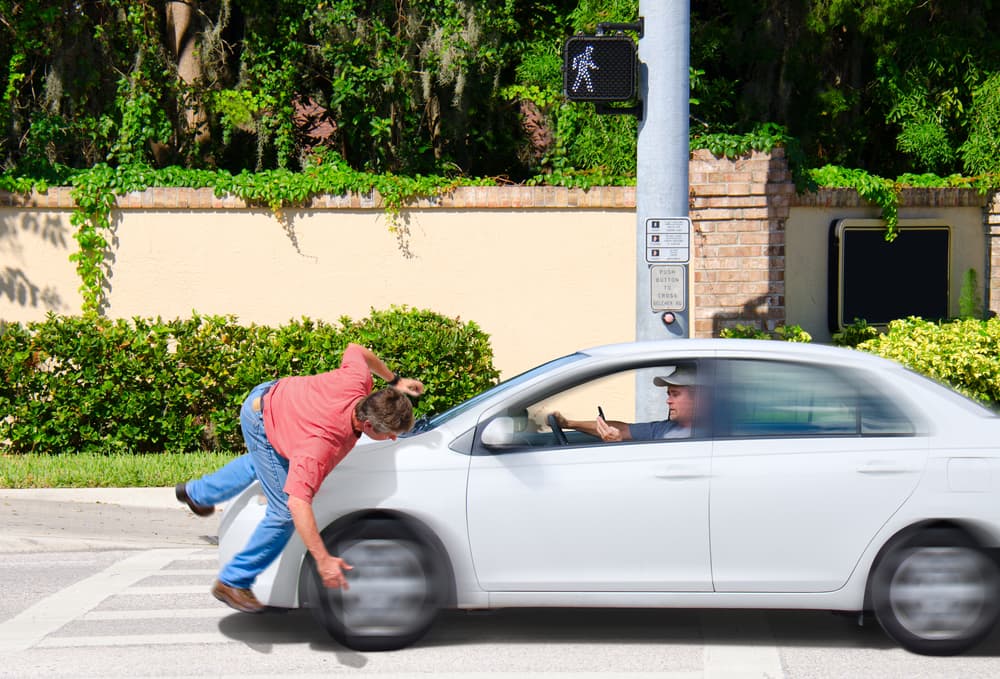Being struck by a vehicle is one of the most devastating events a pedestrian can face. The injuries are often severe, the recovery can be long, and the financial impact can be overwhelming. In addition to medical treatment and physical recovery, victims are left wondering if they have legal grounds to hold the driver accountable.
Basically, if you can prove that someone’s negligence caused your injuries, you can pursue a lawsuit or insurance claim to recover damages. However, the process requires you to demonstrate various elements related to negligence. A personal injury lawyer can be key in uncovering liability and determining the compensation you deserve.
Key Takeaways
- You can sue for being run over if negligence or intentional misconduct caused your injuries.
- To succeed, you must prove duty of care, violation of that duty, a direct link between the breach and your injuries, and that they left you with measurable damages.
- Multiple parties may share legal responsibility.
- An attorney can help with the lawsuit and explore all avenues for compensation.
Legal Grounds for Suing After Being Run Over
 To successfully sue a person for running you over, you need a valid legal basis for your claim. In most pedestrian accident cases, the basis is negligence, a legal concept that holds people responsible when they fail to act with reasonable care, and their actions cause harm.
To successfully sue a person for running you over, you need a valid legal basis for your claim. In most pedestrian accident cases, the basis is negligence, a legal concept that holds people responsible when they fail to act with reasonable care, and their actions cause harm.
Negligence can take many forms in these situations, such as:
- Distracted driving
- Speeding and aggressive driving
- Driving under the influence
- Failure to follow pedestrian right-of-way laws
In some cases, your claim may also be based on intentional misconduct. If the driver deliberately ran you over, whether in a fit of road rage or for some other reason, you can pursue not only compensation for your losses but also punitive damages meant to punish such extreme behavior.
Even if it seems obvious that the driver was at fault, the law still requires you to demonstrate liability before you can recover damages. This usually comes down to proving the four elements of negligence, namely:
- Duty of Care: This involves demonstrating the driver’s responsibility for safety. Every driver has to be careful and ensure they don’t put others in danger while driving. This means they should follow traffic rules, keep their vehicle under control, and pay attention to people walking or riding bikes.
- Breach of Duty: This is about showing that the driver failed to perform their duties in a safe manner. It can involve running a red light or speeding through a crosswalk, failing to yield to oncoming traffic, or driving too fast in bad weather.
- Causation: Here, you need to connect the driver’s careless actions to your injuries. It’s not enough to say they were being reckless, but you have to show that what they did directly caused your accident. For example, if a driver was texting and driving at the same time, you need to prove that their distraction led to the crash.
- Damages: Finally, you have to show that you suffered real harm because of the accident. Even if your injuries aren’t visible, issues like ongoing pain, mental stress, and difficulty moving around are also considered damages.
To successfully establish liability, you need to gather strong evidence. Lawyers may make use of witness statements, surveillance footage, accident reconstruction reports, and medical documentation to build a robust claim. The more thoroughly you can connect the driver’s actions to your injuries, the stronger your case becomes.
Who Can I Sue After Being Run Over?
Correctly identifying the party to sue is foundational to building a successful claim. Different parties may have different levels of liability or resources to pay for damages. Identifying the right party can help you strategize your approach to the claim.
The most obvious defendant is the driver who struck you, but they may not be the only party responsible. Depending on the facts of the incident, you may have claims against:
- The Driver – If their negligence or reckless behavior caused the accident, they can be sued directly for your injuries and losses.
- The Driver’s Employer – If the driver is a direct employee or contract employee their employer could be liable under respondeat superior or employer responsibility for employee actions.
- A Government Entity – If unsafe road conditions, broken traffic signals, or poorly designed crosswalks contributed to the accident, you may have a claim against the city, county, or state. These cases have strict notice deadlines.
- Vehicle or Parts Manufacturers – If a defect, such as faulty brakes or steering components, played a role, the manufacturer or distributor may be responsible under product liability laws.
- Other Negligent Parties – In some cases, another driver, cyclist, or even a premises owner for unsafe premises near the road could share fault for creating the conditions that led to the incident.
Identifying every possible liable party is important because it can increase your chances of full recovery, especially if one party’s insurance coverage is limited. A personal injury attorney will assess the incident thoroughly to determine everyone who may bear legal responsibility.
Hold the Responsible Party Accountable with A Seasoned Injury Attorney
 If someone’s recklessness led to you being run over, you have the legal right to sue and seek compensation. Lawsuits involve holding negligent parties accountable by proving your claims. A personal injury lawyer will initiate a well-prepared lawsuit that demands the justice and financial recovery you deserve. Call your lawyer today and make sure the person who ran you over is held fully responsible.
If someone’s recklessness led to you being run over, you have the legal right to sue and seek compensation. Lawsuits involve holding negligent parties accountable by proving your claims. A personal injury lawyer will initiate a well-prepared lawsuit that demands the justice and financial recovery you deserve. Call your lawyer today and make sure the person who ran you over is held fully responsible.
FAQs
What if the accident was a hit-and-run?
You can still sue once the driver is identified, and police investigations, witness statements, or surveillance footage may help track them down. In the meantime, your own uninsured motorist coverage could help cover costs. An attorney can also work with investigators to locate the at-fault driver and secure evidence before it disappears.
Is it better to settle or go to court in a case like this?
Most cases settle out of court because it’s faster, not so expensive, and less stressful for everyone involved. However, if the insurance company offers an unreasonably low settlement, going to trial may be the best way to obtain full and fair compensation. Your lawyer will help you assess the pros and cons based on your case’s strength, the available evidence, and the damages you’re entitled to recover.
What is the maximum I can sue for someone running me over?
There is no single nationwide limit on how much you can sue for because it depends on your state’s laws, the severity of your injuries, and the insurance coverage available. Some states have no caps on personal injury damages, while others limit non-economic damages such as pain and suffering. Your recovery will also depend on the defendant’s assets and policy limits. Even if your injuries are worth more, the available compensation may be restricted by those factors. A personal injury attorney will look into your case and identify every possible source of recovery.
